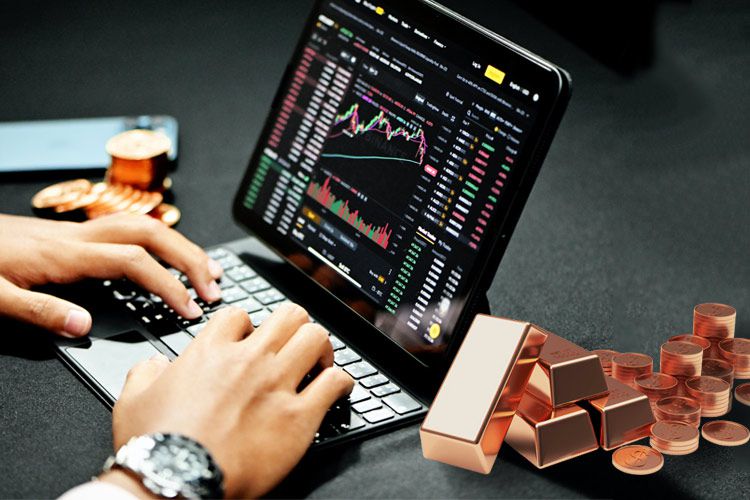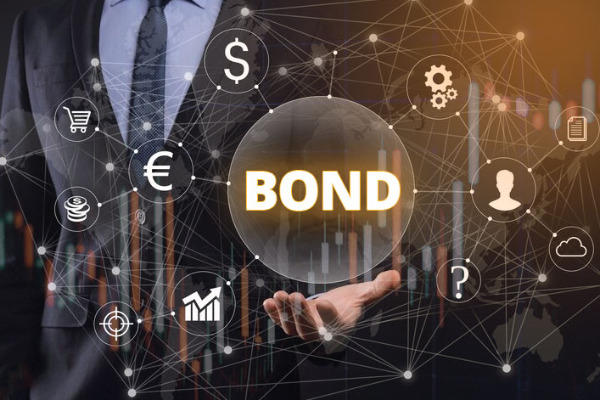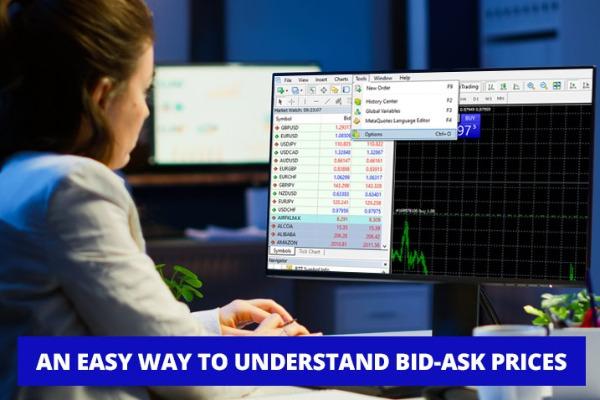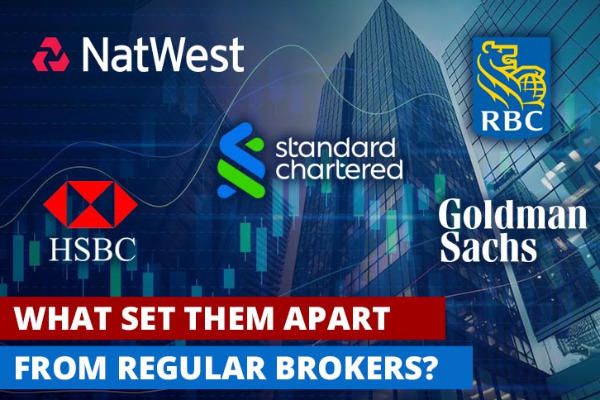While copper doesn't share the same status as gold or silver, it also plays a big role in various industries and is quite a popular commodity to trade.
Instead of simply buying and selling stocks, bonds, or ETFs, many investors prefer to invest in physical commodities like metals. Gold and silver are the most commonly traded metals in the industry, but investing in copper is actually pretty popular too. The reason being the commodity's use in various parts of electronics, such as semiconductors and wiring. It's also an important material in other industries like home construction and vehicle production.

Copper trading might be a great alternative for both individual traders and institutions. However, before you trade the metal, it's important to learn how to trade copper and what factors affect the price movement.
Contents
What is Copper Trading?
Copper is a red-colored base metal, which has been used in human technology for thousands of years and continues to do so in the modern era. Similar to silver and gold, copper is very ductile and able to conduct electricity, which makes it really useful. Copper has a wide range of applications in industrial manufacturing and day-to-day goodies, making it a perfect commodity to trade.
Due to its usefulness, the price of copper has a positive correlation with global economic growth and is even often seen as one of the indicators to analyze the global economy. So in reality, copper trading is not as simple as it looks. Traders need to build a balanced portfolio and treat copper correctly.
Different Ways to Trade and Invest in Copper
- Physical copper
Like gold and silver, you can buy a physical quantity of copper and physically hold the asset until you're ready to sell. You can purchase copper bullion bars and coins from metal dealers. Keep in mind that this method comes with the cost of storing the metal, so it's often considered more expensive and impractical. - Copper CFDs
This allows you to speculate on the price of copper in real time without actually owning the physical asset. Such flexibility allows you to profit when the price moves up or down. CFDs are leveraged products, so you only need to put in a small sum to gain full exposure to the underlying asset. Please note that in leveraged trading, the profit or loss is calculated according to the full position size, so your profits and losses will be magnified. - Copper Futures
If you believe that the price of copper will rise in the future, you can try trading with copper futures. This means you basically join a contract and agree on a price that you need to pay today for a specific quantity of copper that will be delivered at a set date in the future. The goal is to sell the copper at a higher price than you paid. When the contract is about to expire, you need to either accept the physical delivery of the metal or roll the position forward to the following month. - Copper Options
Similar to futures, options are also derivatives with an expiration date. The difference is that options are successful when the price hits the predetermined level by the expiration date. You will get a profit when the price rises enough to cover the initial amount paid. - Copper ETFs
You can invest copper as shares on exchanges in the same way as stocks do. You can choose to buy Exchange-Traded Funds (ETFs) that include bullion, futures, options, or a combination of those three. - Copper Stocks
There is also an option to invest in companies that mine copper. Aside from the copper prices, you should also be paying attention to the fundamentals when investing in copper companies. The amount of gain then depends on the quality of the company management and the profitability of the mines.
Why Trade Copper?
Copper might not be as popular as gold and silver, but the metal actually has many advantages. The first one is the high accessibility. As mentioned before, there are many different ways to make profits from copper, so you can choose any method that fits your style. Secondly, copper has many uses in various industries, starting from building construction to electronic manufacturing. It is also a strong conductor of electricity and heat, making it highly appealing to many businesses.
It is also worth pointing out that, unlike gold and silver, copper has a greater quantity and is considered not valuable enough to be currencies, so the price of the metal is simply cheaper. This makes it a great alternative for beginner traders who are looking for affordable commodities to invest in. It also increases the demand in the market, which is good news for traders as it can lead to lower spreads and possibly cleaner chart patterns.
What Affects the Price of Copper
In order to make a good analysis of copper trading, it's important to understand what aspects can influence copper values. The price of copper can fluctuate due to many factors, but here are some of the most powerful drivers in the market:
Global Economic Growth
Copper is primarily an industrial metal, so the demand is influenced by things like manufacturing, home construction, electronic production, etc. For this particular reason, copper is often used as a benchmark for industrial growth and even overall economic growth.
If the global economy is in a period of sustained growth, the price of copper is usually high due to the increased industrial demand for the metal. On the other hand, if the market is in a period of economic downturn, the price of copper is usually low as there's less demand for the metal. As a result, many businesses or countries like to stockpile copper in order to survive the price volatility when the supply fails or demand rises unexpectedly.
US Dollar
Like other metals, copper has a negative correlation with the US Dollar. When the currency depreciates, copper prices tend to increase and vice versa. This partly happens because copper is mostly priced in the US Dollar.
Emerging Markets
As an industrial metal, copper is mostly used in developing countries that are in need to improve their housing and transport infrastructures. Therefore, emerging markets like China, India, and Brazil are some of the top players that influence the demand. A slowdown in the growth of these countries can weigh down on the price of copper, while an economic boost can significantly increase the market price.
Supply Disruptions
Any political, economic, or environmental disruption in copper-producing areas might affect the price of copper in the market. This was evident in 2010, when a massive earthquake hit Chile, the world's leading supplier of copper. The price of copper quickly hit a five-week high at $7600 a tonne in the Asian trade.
Global Housing Market
Aside from industrial uses, copper is also commonly found in constructions of houses – mainly for electrical wiring and plumbing. Therefore, the dynamic of the global housing market can also affect the price of copper. You can monitor the housing market by using factors that influence the need for housing or prices of housing, such as non-farm payrolls and GDP of certain countries.
Oil
The price of copper is affected by many of the same factors as oil, so they typically have a strong positive correlation. Therefore, paying attention to oil price can be a great method to gain valuable insight into the copper market. However, it is also worth mentioning that renewable energy sources are starting to grow and play an important role in the market. This can interrupt the traditional positive relationship between copper and oil in the future.
Metal Substitution
Like other commodities in the market, the price of copper can also be affected by the emergence of cheaper alternatives, which are probably more appealing when the price of copper rises. Today, it's pretty common for other metals like aluminum, nickel, lead, and iron to be used as substitutes for copper in some industries.
Copper Trading Hours
Copper trading hours essentially depend on the opening times of the metal exchange on which you are trading.
- London Metal Exchange: 1:00 a.m. to 7:00 p.m. Greenwich Mean Time, every day from Monday to Friday.
- New York Mercantile Exchange: 6:00 p.m. to 5:00 p.m. U.S ET, every day from Sunday to Friday.
- CME Globex and CME ClearPort: 6:00 p.m. - 5:00 p.m. (17:00 - 16:00 Chicago Time/CT), every day from Sunday to Friday, with a 60-minute break each day beginning at 5:00 p.m.
Conclusion: Should You Trade Copper?
Copper is a great commodity to trade, but it certainly has some unique elements that every trader should know before putting in any money. The first thing is to figure out how you are going to invest. You need to learn about the pros and cons of each method and understand the risk that you're taking. For instance, buying physical copper might sound good but it requires storage space and maintenance costs.
Aside from that, you also need to know about copper prices and how certain factors can affect your portfolio's value. Once you open a trade, you can take advantage of markets that are rising or falling. If you think that the price will increase, open a buy order, but if you think that the price will fall, open a sell order. Your decision about which direction to trade in must be based on the analysis method that you have chosen to perform, such as technical or fundamental. Remember that copper trading is not free of risk, so make sure to use a solid strategy as well as sound risk management.

 Dedicated FREE FOREX VPS
Dedicated FREE FOREX VPS Free FOREX Virtual Private Server
Free FOREX Virtual Private Server MT4 Demo Contest, Get $500
MT4 Demo Contest, Get $500 Sign Up for an Account, Claim 60% Deposit Bonus
Sign Up for an Account, Claim 60% Deposit Bonus Free MT4/MT5 VPS 2024
Free MT4/MT5 VPS 2024 Send E-mail and Get Free Merchandise
Send E-mail and Get Free Merchandise $1K Refer a Friend Bonus for Pepperstone Pro clients
$1K Refer a Friend Bonus for Pepperstone Pro clients Maximize Your Earnings with 100% Deposit bonus
Maximize Your Earnings with 100% Deposit bonus Trade to Win, $5,000 Monthly Demo Contest
Trade to Win, $5,000 Monthly Demo Contest Claim 30% + 15% Deposit Bonus from LiteFinance
Claim 30% + 15% Deposit Bonus from LiteFinance












7 Comments
Justin
Nov 12 2022
I recently came across an interesting article about trading copper, and it mentioned an intriguing correlation between copper prices and the US Dollar. According to the article, there is a negative correlation, meaning that when the US Dollar depreciates, copper prices tend to increase, and vice versa. I find this relationship quite fascinating! Could you provide some insights into the factors that contribute to this inverse connection between copper prices and the US Dollar?
Moreover, I noticed that the article mentioned how copper is mostly priced in the US Dollar. It got me wondering about the global implications of the US Dollar's fluctuations on the copper market. How exactly does the rise or fall of the US Dollar impact the overall global copper market? Are there any specific trading strategies or market dynamics that come into play as a result of this relationship?
Rendy
Jun 2 2023
@Justin: The connection between copper prices and the US Dollar is pretty fascinating. When the US Dollar goes down, copper prices tend to go up, and vice versa. There are a couple of reasons for this.
First, copper is traded globally, and its price is affected by supply and demand around the world. When the US Dollar gets weaker, people with other currencies can buy more copper because it becomes more affordable. That increases the demand and drives up prices.
Second, the US Dollar's strength or weakness reflects how the US economy is doing. Copper is used in lots of industries like construction and manufacturing. So, if the US Dollar goes down, it can mean the US economy is not doing so well. That could lead to more government spending, stimulus measures, and infrastructure projects, which all increase the demand for copper and push prices higher.
As for the global impact, a stronger US Dollar can make copper more expensive for people using other currencies, which could lower demand and prices. On the flip side, a weaker US Dollar can boost global demand for copper and make prices go up.
Traders keep an eye on the US Dollar's movements as a clue for potential changes in copper prices. Some may use it as an indicator for their trading strategies. Others might use currency hedging techniques to manage the risk of trading copper.
Aston
Nov 14 2022
It is interesting here! What are the factors that contribute to the strong connection between copper and oil prices? I came across some data indicating that the price of copper is influenced by many of the same factors as oil, leading to a strong positive correlation between the two after reading this article. I'm curious to understand why this correlation exists and how paying attention to oil prices can provide valuable insights into the copper market. Could you shed some light on the factors that link copper and oil prices together?
William
May 27 2023
@Aston: Absolutely, mate! The relationship between copper and oil prices is quite fascinating, and there are several factors that contribute to their strong connection. Let's dive into it!
First off, both copper and oil are key commodities that play vital roles in global economic activities. They are widely used in industries like construction, manufacturing, and infrastructure development. So, any shifts in economic conditions, such as changes in industrial production or GDP growth, can impact the demand for both copper and oil.
Another factor is their shared sensitivity to geopolitical events and global market sentiment. News about conflicts, trade tensions, or supply disruptions can affect both the oil and copper markets.
Furthermore, currency fluctuations can also link copper and oil prices. As oil is commonly traded in US dollars, changes in the value of the dollar can impact the oil market. Since copper is also priced in dollars, currency fluctuations can indirectly affect the copper market.
Lastly, there is a connection between energy costs and copper production. Mining and extracting copper require significant energy inputs, and energy prices, including oil, play a crucial role in determining production costs. If oil prices rise, it can impact mining expenses, potentially affecting copper supply and prices.
Potter
Feb 16 2023
Hey there! So, you know how the price of copper can go up and down, right? Well, when copper prices rise, it's pretty common for cheaper alternatives to pop up and steal the spotlight. Metals like aluminum, nickel, lead, and iron often step in as substitutes for copper in different industries. It's like a little competition going on!
Now, I'm curious, how do you think the price dynamics of copper compare to these other commodities? Are there industries that totally jump ship and go for the alternatives when copper gets expensive? Or are there certain sectors that just can't resist sticking with good ol' copper, no matter what? Let's chat about it!
Evan
May 24 2023
Hey there! I've got a question about copper trading in CFDs. I recently learned about the concept of overlapping trading sessions in Forex, where market volatility can be high and present good profit opportunities. Then, I came across an interesting article about copper trading and discovered that there is a market for copper too. The article mentioned specific trading hours for copper on different metal exchanges.
So, here's my question: Do overlapping trading sessions occur in copper trading CFDs as well? I'm curious to know if there are any specific time periods where the copper market experiences increased activity and potential profit opportunities. Thanks!
Herald
May 28 2023
@Evan: Absolutely! Overlapping trading sessions also occur in copper trading CFDs, just like in other financial markets. The copper market has its own peak trading hours and overlaps with other major trading sessions, creating increased activity and potential profit opportunities.
The primary market for copper is the London Metal Exchange (LME), which sets the benchmark price for copper. The LME is open during specific hours, typically from Monday to Friday.
During the LME trading hours, there can be overlapping sessions with other major markets, such as the Asian, European, and North American sessions. These overlaps can lead to higher trading volumes and increased price volatility in the copper market. Traders often consider these overlapping periods as they offer more liquidity and potential opportunities for profit.